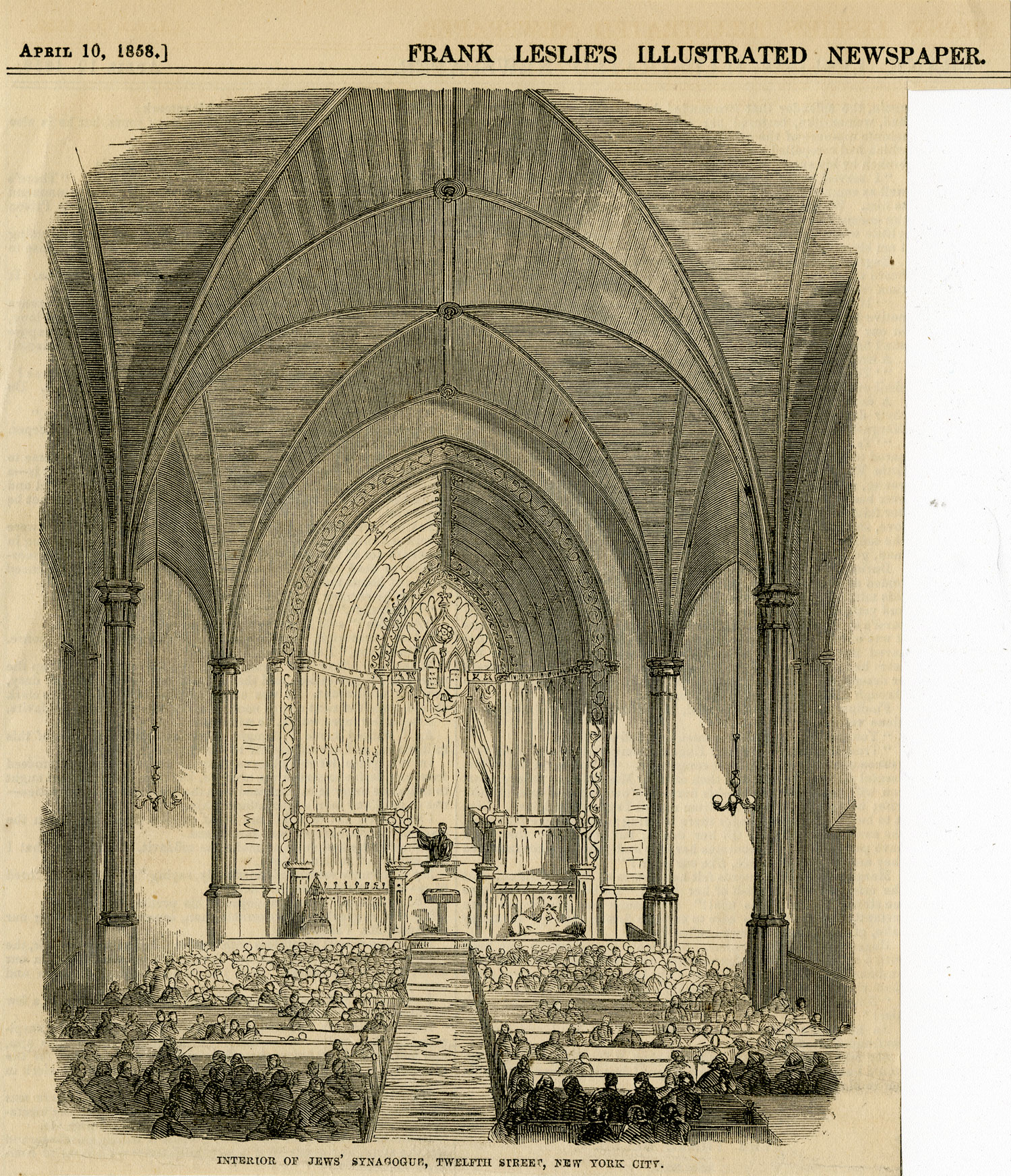In 1854, New York’s Congregation Emanu-El moved from Clinton Street, where it had occupied a former church, to another former church—the Baptist congregation on 12th Street between 3rd and 4th Avenues. This wood engraving of 1858 shows the new sanctuary.
The appearance and arrangement is a dramatic departure from traditional synagogues, though more out of necessity than design. Repurposing a church was not uncommon for congregations, and adapting such a building to Jewish religious use required imagination and innovation. Even when repurposed, however, former churches inevitably retained trademark characteristics. In the case of Temple Emanu-El, we see that the high Gothic wooden cross vaults and raised platform in an apse were retained, while a tall Gothic ark was fitted into the apse; this was probably the same ark designed by Leopold Eidlitz (1823–1908) for the previous synagogue. Unlike earlier American synagogues, there were no galleries or a separate women’s section—the original structure had none. Instead, seating was in pews that ran across the width of the nave on either side of a broad central aisle that led directly to a pulpit set in the middle of the raised apse platform. The officiate or speaker, shown here, is raised high above the congregation. This churchlike arrangement, in part the consequence of the repurposed building, marked the beginning of the theater-like plan that would come to dominate Reform synagogues in America later in the 19th century, and would eventually become common for the other, more traditional, denominations.
It is important to note that as a result of the building’s design, women are seated on the same level with men and, at the same time, the seating of the entire congregation—men and women—is made subservient to the position of the clergy. The passive spectator role previously assigned to women in the galleries was now, in the name of decorum, adopted for the entire congregation.
